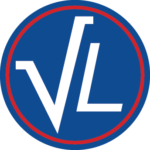Control Coupling Analysis with VerOLink

VerOLink
VerOLink (Verify Object Linking) is a verification tool (DO-178B, DO-330) that helps satisfy the control coupling objective. Control coupling provides a measure of the correctness of the integration of many independently compiled object files linked to form a single executable image. Even if all requirements based tests are performed on the integrated executable image and the coverage is measured at the object code level without instrumenting the code, the possibility still exists that the linker could have linked a function call incorrectly. VerOLink is used to provide this final check. Verification of the code integration is fully automatic with VerOLink. The tool analyzes the executable image to find all functions and all function calls and their locations in the object files. By analyzing the object files used in an application, VerOLink verifies that the function calls within an executable image have been resolved correctly when the linker combined the object files
.
Benefits:
Requirements-based testing provides one way to verify that software behaves or performs as expected. The use of structural coverage analysis, particularly when performed at the object code level provides evidence that unintended functions have been removed. What remains is the determination that the software function is invoked as expected, and that an error introduced by the linker is found.
Qualification:
VerOLink is supported by full tool qualification data and documentation. It may be used as a DO-178C/DO-330 TQL tool and the control coupling results used for Level A certification credit.
